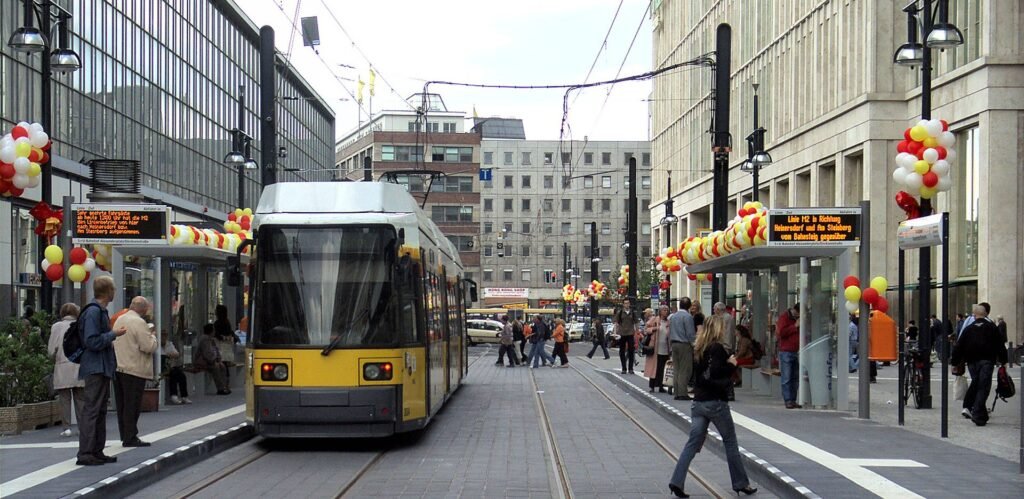Exploring a foreign city while navigating its public transportation network can offer both a freeing and daunting experience. Whether you are an excited traveler ready to experience a bustling new metropolis, or a homesick study abroad student looking for familiar solace, it is important to learn the ropes of the city’s public transportation system before you set off on your journey. Today’s article will offer you the tools you need to make sure your foreign travel is smooth sailing.
1. Exploring a New City’s Public Transport System
- Public transport systems are often a great way to explore a city, save money and get around with ease. From subways and trams to buses and trains, these systems have a huge variety to suit different needs.
- Before , it is important to read up on the available options and learn about the different fares. It is also important to know the etiquette of the public transportation system, such as being aware of personal space or avoiding talking loudly on the phone.
- Getting around on public transport can often be intimidating in a new city, as routes and timetables can be confusing. However, there are helpful apps that can help make understanding and using the public transport system easy. Apps like City Mapper or Moovit can provide information on routes and schedules, as well as provide the best fares for certain journeys.
- In some cities, there are also good walking routes and sightseeing options on board the public transport system. Navigating the underground of a new city can be exciting, as many networks have historically interesting stations, routes and architecture.
2. Decoding a Bus or Train Map with Confidence
Deciphering a mass transit map can seem like a daunting task – just a jumble of tangled lines and squiggles. But, with a few simple tips, you can quickly learn to read and understand any transportation map like a professional. Here are a few key take-aways to demystify decoding a bus or train map:
- Look for Iconography: Many maps will use symbols to represent certain locations and points of interest. From landmarks like hospitals and parks, to modes of transportation like aircrafts and taxis, identifying these symbols make wayfinding much easier.
- Eliminate Unnecessary Detail: Don’t let too much detail distract you. Stick to the map’s most important aspects, which usually includes train or bus route lines, stations, and transfer points.
- Identify Location Naming Patterns: Most public transit mapmakers use a standard pattern for location titles. Learning these patterns can help you quickly decipher information on the spot.
We might have learned to interpret traditional transit maps by trial and error as children, but can be achieved with a little knowledge. Familiarising yourself with these few basics will make wayfinding much easier and allow you to navigate any route with confidence.
3. Mastering Multilingual Signs and Directions
Knowing multiple languages is a powerful tool. However, having a grasp on something as seemingly simple as basic signs and directions can provide a unique, helpful advantage. Here are a few tips for :
- Perfect Your Pronunciation. Multilingual signage usually includes a number of foreign words, so it’s key to become familiar with the correct pronunciation. Learning the fundamentals trough audio playback or language classes are great ways to get a proper foundation.
- Be Ready for Cultural Influences. Many languages don’t simply come with the same written or spoken words — you’ll also find cultural influences in signs and directions. Being prepared for both the words and the culture will make it much easier to grasp how signs and directions vary from language to language.
- Get Fluid Achieving fluency in multiple languages isn’t easy, but it’s important for mastering signs and directions. Start with the basics of each language, and practice as often as possible to get more familiar. It can be helpful to pair up with someone who speaks the language, as it’s the best way to guarantee your usage remains accurate.
may seem a bit daunting, but with some practice and dedication it can become second nature. Multilingual signs and directions are important to understand as they can help break language barriers and lead to better communication.
4. Enjoying the Ride: Tips for Stress-Free Commutes
1. Plan Ahead: The best way to make your commute more stress-free is to plan it ahead of time. Allow yourself extra time so that you won’t feel rushed on the way there. Then you can also plan your route so that it takes the least amount of time and effort.
2. Comfort Is Key: Try to make your commute as comfortable as possible. Wear comfortable clothing, listen to music, listen to podcasts, or read a book. You can also bring a snack in case you get hungry along the way. Delighting in our surroundings or playing calming tunes can help us manage difficult moments without stress.
3. Make It Social: Consider a carpool with a friend or neighbor. This can make your commute more fun and less stressful. If not a ride share, try meeting friends before or after work to make the journey to the office more sociable.
4. Organized Commuting: Everyone needs to take precautions when it comes to their commute, so try to stay organized. Have an extra charger in your car and always have an emergency kit to help you stay safe. Lastly, keep all the documents and items you might need for the day in one place. That way you can grab it quickly in the morning, without feeling overwhelmed.
Navigating public transportation in unfamiliar cities can be intimidating, but with careful planning and an eye on safety, it can be a rewarding experience – both for travelers and the cities they create meaningful memories in along the way! So get up and go, and explore all the world’s bustling hubs, one departure at a time.

